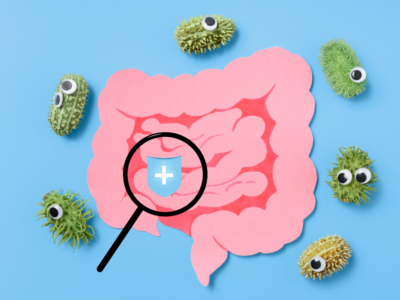Pregnancy and postpartum are full of unexpected firsts you probably never anticipated—including the changes to your breasts.
We’ve all been there. You adjust to your new boobs during pregnancy, only to be knocked back to reality when you discover your post-pregnancy breasts are not at all like the perky pals you came to know throughout pregnancy.
Fortunately…and unfortunately…you aren’t alone. Approximately 73% of women report experiencing a change to their breasts after having a baby.
So, what’s normal, and will they ever go back to their pre-pregnancy state? Let’s talk.
How Your Breasts Change During Pregnancy
Early Pregnancy
As soon as you become pregnant, your hormones and body begin to change. For many women, breast changes are among one of the first signs of pregnancy. However, many of these indicators are also commonly associated with premenstrual syndrome (PMS), including swollen and tender breasts. This makes it difficult to tell if your body is preparing for its menstrual cycle or gearing up for the roller coaster of pregnancy and breastfeeding.
And while these changes can be…well…a pain…they are caused by fluctuations in hormone levels—mainly estrogen, progesterone, and prolactin—as your body prepares to provide nourishment for your new little one.
Later on in pregnancy
During the second trimester, your body begins to produce colostrum—the first form of breast milk known for its nutrient-rich profile. During this time, especially towards the end of your third trimester, you may experience some leaking from your nipples. While potentially alarming for a first time mom, this is completely normal.
This is also when you may start to notice changes in the appearance of your nipples and areolas—the area around the nipple. It’s common for the areola and nipple to become darker and larger as pregnancy progresses. Your nipples may also change shape and become more pronounced.
But the fun doesn’t stop once you deliver your sweet baby…
How your breast change immediately after birth
Immediately after delivery, your hormone levels undergo another drastic change. Estrogen and progesterone levels plummet, signaling an increase in colostrum production. It also cues your body to begin producing transitional milk, the precursor to mature breast milk.
Around day three, your breasts will likely become more tender and full. This is known as engorgement. It’s common for your breasts to feel heavy, swollen, and hard during this time—not to mention MUCH BIGGER.
How your breasts change while breastfeeding
While engorgement typically diminishes within the first week, your breasts will probably remain larger for the duration of your breastfeeding journey. This is especially true during the first few months after delivery.
It’s also normal for the breasts to feel fuller and more enlarged the longer you go between feedings. It’s important to remember that milk production operates on a supply-and-demand system. The higher the demand, the more milk supply the body will make.
Nipple soreness and cracked or bleeding nipples are also common during the first few weeks of breastfeeding…fun! However, this shouldn’t linger. Prolonged nipple complications could be a sign of an improper latch and may require help from a medical provider or lactation consultant.
Will you breasts ever go back to normal after having a child?
The short answer is…maybe. Most women report permanent changes to their boobs after pregnancy, particularly sagging.
While the changes are commonly blamed on breastfeeding, a 2008 study found that there were no substantial differences in boobs before and after breastfeeding. So while you may find that your breasts sag more, it’s likely due to changes in skin elasticity and muscle strength. The same characteristics that make your breasts unique from one woman to another can also cause them to change after pregnancy.
The main factors that contribute to sagging breasts include:
- Older age
- Higher body mass index (BMI)
- Greater number of pregnancies
- History of smoking
- Larger pre-pregnancy bra size
Do Your Nipples Change After Breastfeeding?
Although the majority of women experience lasting changes to their breasts, most nipples return to their normal size and color within a few months. Some women report their nipples remain larger, even after their breastfeeding journey comes to an end.
How to Care for Your Post-Pregnancy Breasts
The changes to your breasts throughout pregnancy and breastfeeding may be inevitable, but there are steps you can take to help minimize these.
Here are some tips to help care for your postpartum breasts:
- Wear a properly fitting and supportive bra during pregnancy and breastfeeding: Don’t wear a bra that is too tight. This can lead to issues with milk supply and plugged milk ducts.
- Eat a healthy diet: Maintaining a healthy body weight and avoiding rapid weight gain or loss can help limit sagging.
- Add strength training to your workout regimen: This can build the muscles beneath the breasts, ultimately giving the breasts a lifted appearance.
- Use nipple cream to soothe sore and cracked nipples: This will also help reduce the chance of infection from broken skin.
- Don’t stress about sagging: While it’s normal to have some concerns, remember that all breasts sag over time regardless of whether or not you have children.
Don’t Sweat The Changes
You’ll likely see changes in the size, shape, color, and even texture of your breasts throughout pregnancy, breastfeeding, and beyond. Just remember that all boobs are different! What may happen to one woman’s breasts may not happen to another.
While you may find your breasts sag more after pregnancy or breastfeeding, there are many ways you can help limit these changes. So don’t stress! Enjoy the journey of motherhood instead… it’s certainly one for the record books!



